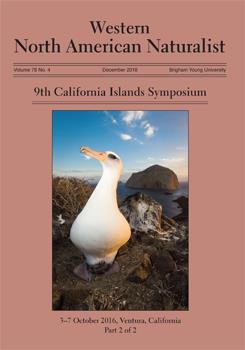Ecosystem restoration efforts have been ongoing on the Channel Islands of California since the 1980s. Although these island ecosystems evolved without ungulate grazers, large nonnative grazers, including sheep, cattle, feral pigs, deer, and elk, were present on the islands for over 160 years. Intensive grazing led to reductions in the extent of woody vegetation, increases in the area of grassland and bare ground, and widespread landsliding and gully erosion. This study focuses on Santa Rosa Island, the second largest (215.3 km2) island in Channel Islands National Park. After the park was created in 1980, the National Park Service progressively removed nonnative grazers to facilitate the restoration of native vegetation and the wildlife communities they support. We constructed a time series (1989 to 2015) of Landsat TM5 and Landsat 7 ETM+ images to evaluate large-scale and long-term vegetation change in response to grazer removal on Santa Rosa Island. We also evaluated the influence of slope percent, which can be an indicator of past grazing accessibility, on ecosystem recovery. Results indicate that removing nonnative grazers led to passive restoration of 42.1 km2 of scrub, chaparral, and woodland vegetation. In contrast, the area of grassland vegetation decreased by 31.2 km2 and bare ground decreased by 12.0 km2. The extent of scrub and woodland vegetation recovery was greater on gentle and moderate slopes compared to steep slopes, indicating that terrain does influence passive restoration. Despite changes in vegetation cover, 5.4 km2 has remained bare. Much of the bare ground is on ridgelines that were denuded down to the bedrock or regolith. Active restoration will be necessary on bare ridgelines, such as erosion control, fog capture, and oak woodland reforestation.
BioOne.org will be down briefly for maintenance on 17 December 2024 between 18:00-22:00 Pacific Time US. We apologize for any inconvenience.
How to translate text using browser tools
17 December 2018
The Influence of Slope on Vegetation Recovery Following Nonnative Grazer Removal on Santa Rosa Island, California
Ryan Summers,
Jamie Masukawa,
Brett D. Hartman
ACCESS THE FULL ARTICLE






